Canadian Art At McMichael Center
In Toronto on a Sunday morning in June, we caught the Art Bus to the McMichael Center. A Canadian Art festival was going to held in McMichael Center.Just north of Toronto in Kleinberg, the Center was created in 1952 to display Canadian art, from both indigenous people and European Canadians. Although there were pieces by Canadians on not particularly Canadian subjects, the focus was art depicting Canada. Since Canada is a country of glorious natural beauty, it was a treat for a botanist and ecologist.
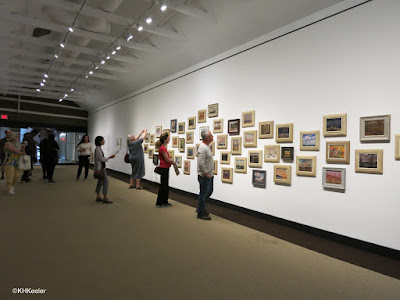 |
| Landscapes by Tom Thompson |
 |
| The view outside and a painting by Norval Morrisseau |
Many of the art works made environmental statements, as you might expect from artists painting the Canadian landscape. Some of the issues have been solved or become mainstream over time, but generally the calls to preserve and share our natural heritage are as valid today as when they were painted.
Naturally, the art also raised questions I had never thought about. I was particularly struck by the Size Matters project by Steve Driscoll and Finn O'Hara. O'Hara photographed large abstract paintings by Driscoll in a variety of outdoor settings, putting the paintings into various landscapes to indicate their size (Discussion of exhibition: link). For me it raised questions of the relation of art and the outdoors/nature. Below, left, the painting was set into a busy downtown street and, right, into a winter forest. Engaging commuters seemed good, but the bright turquoise on the snow felt out of place. Which led to the question: what is a painting's proper place?
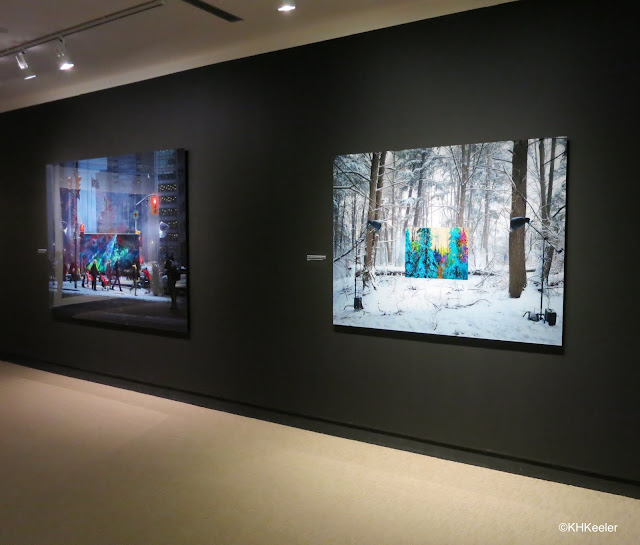 |
| Size Matters Exhibition: Steve Driscoll and Finn O'Hara |
Here is another: I thought the painting in the center a big improvement over the junk and graffiti of the background. But is there any logical basis to that view? Might you not prefer the reality over the art or graffiti on walls to paint on canvas? Or is the whole greater than the sum of the parts?
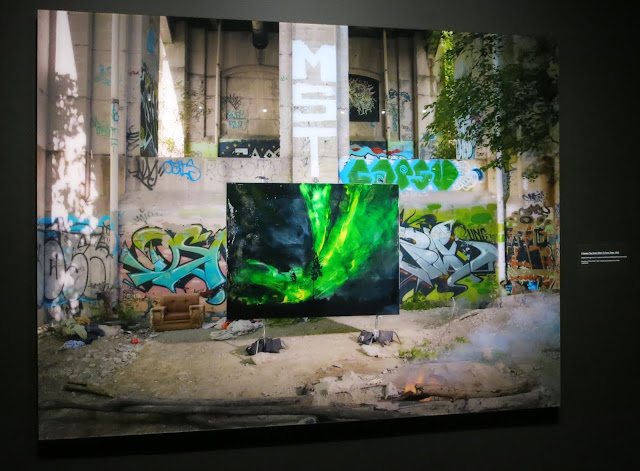 |
| Steve Driscoll and Finn O[Hara Photograph in the Size Matters Exhibition |
The trail meandered near a gentle stream. Here is chicory (Cichorium intybus), a very pretty weed from Europe, flowering between the path and the stream.
Uncer the trees was this striking shrub, probably red elderberry, Sambucus racemosa.
And, also in the McMichael Center's forest, great dark sculptures by Ivan Eyre, this one titled Yell.
I liked all of it very much.

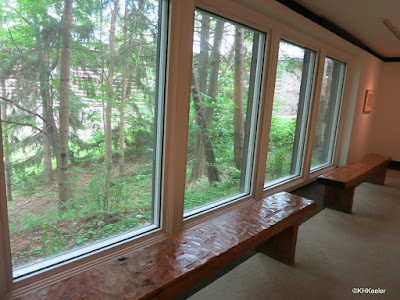
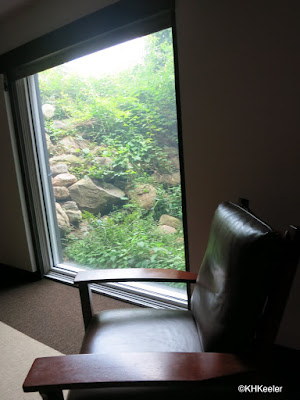
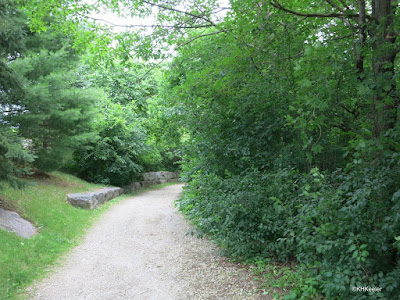

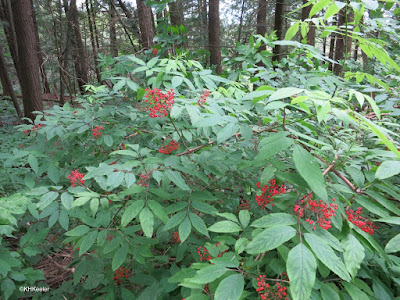
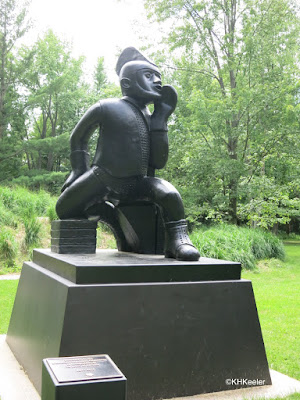
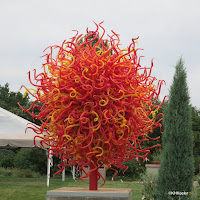
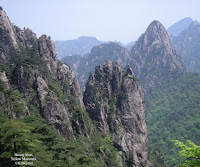
No comments:
Post a Comment